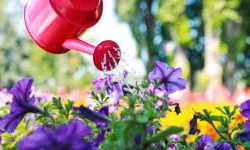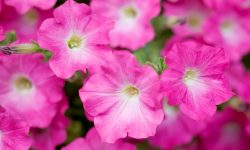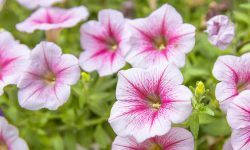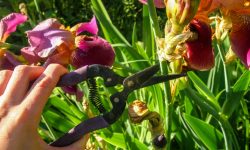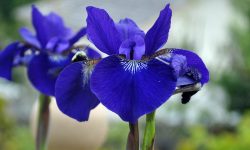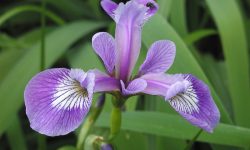Rhododendrons are admired for their lush blooms and vibrant foliage. Their beauty can transform a simple garden into a colorful retreat. Yet, achieving such healthy growth requires more than just planting and watering. Fertilization plays a critical role in supporting their nutrient needs throughout the year.
Knowing when to fertilize rhododendrons is essential for maximizing their flowering potential. Fertilizing at the wrong time can harm buds, stress roots, and reduce bloom quality. With the right timing and methods, you can ensure your shrubs remain vigorous, disease-resistant, and ready to impress every spring. This guide offers expert advice to help you fertilize at the perfect time for thriving rhododendrons.
Understanding Rhododendron Nutrient Needs

Rhododendrons have specific nutrient requirements that set them apart from many other garden shrubs. Their shallow root systems absorb nutrients efficiently, but only if the soil is prepared correctly. These plants prefer slightly acidic soil, which allows them to take in key minerals like iron and magnesium. Without the right pH balance, nutrient absorption declines, leading to pale leaves and weak growth.
A balanced approach to fertilization focuses on three main nutrients. Nitrogen supports lush foliage, phosphorus strengthens root systems, and potassium promotes vibrant, long-lasting blooms. However, too much nitrogen can push excessive leaf growth at the expense of flowers. Choosing a fertilizer formulated specifically for acid-loving plants ensures your rhododendrons receive the correct nutrient ratios.
Nutrient needs also change with the seasons. During spring, plants demand more energy to produce buds and blooms. After flowering, they shift focus to root and leaf development. Understanding these cycles helps you adjust feeding schedules for the best results. Regular observation and seasonal soil testing allow you to fine-tune your fertilization plan, ensuring your rhododendrons remain healthy and ready to bloom year after year.
Best Time to Fertilize Rhododendrons
Timing is one of the most important factors in fertilizing rhododendrons. Feeding at the wrong moment can lead to wasted nutrients or harm to the plant. The ideal time to fertilize is in early spring, just before new growth begins. At this stage, the roots are active and ready to absorb nutrients that will support budding and leaf expansion.
A second light feeding can be given immediately after flowering. This helps replenish the plant’s energy reserves and encourages healthy leaf and root growth for the next season. Fertilizing after blooming also supports the development of next year’s flower buds, ensuring a vibrant display.
Avoid applying fertilizer too late in the growing season. Late feeding can stimulate tender new growth that may not harden before frost, leaving it vulnerable to winter damage. Always consider your local climate when determining timing. Warmer regions may allow for earlier applications, while cooler areas require waiting until the soil warms enough for root activity. Consistent, well-timed fertilization keeps your rhododendrons vigorous, resilient, and prepared to produce stunning blooms year after year.
Fertilizing Young vs. Mature Rhododendrons
Fertilizing Young Rhododendrons
Young rhododendrons focus on root growth during their first years. At this stage, they need gentle feeding to support steady development without stressing the plant. A balanced, slow-release fertilizer applied in smaller amounts is best. This prevents nutrient overload, which can burn delicate roots.
Fertilize young plants more frequently than mature ones, but always in small doses. Early spring feeding helps prepare for seasonal growth, while a light mid-summer feeding maintains vigor. Avoid late-season fertilization to prevent tender new growth before winter.
Soil health is critical for young rhododendrons. Keep the soil slightly acidic to aid nutrient absorption. Adding organic materials like compost or pine needles improves structure and acidity over time. Regular monitoring ensures the plant’s foundation stays healthy, setting the stage for years of beauty.
Fertilizing Mature Rhododendrons
Mature rhododendrons have established roots and can handle richer nutrients. They typically require only two main feedings per year. The first, in early spring, fuels growth and bud development. The second, after flowering, replenishes energy for the next bloom cycle.
Choose a fertilizer with more phosphorus and potassium to encourage larger, stronger blooms. Avoid excessive nitrogen, which promotes leaf growth at the expense of flowers. Spread fertilizer evenly around the drip line for best absorption.
Soil testing remains important for mature shrubs. Adjusting nutrient levels according to results prevents deficiencies or excesses. Combined with proper watering and mulching, well-timed fertilization helps mature rhododendrons maintain their shape, resilience, and stunning floral displays year after year.
Choosing the Right Fertilizer for Rhododendrons
Rhododendrons have specific nutritional needs that differ from many garden shrubs. They thrive in acidic soil and require fertilizers formulated for acid-loving plants. Using a generic or alkaline fertilizer can cause nutrient imbalances, leading to yellow leaves, weak growth, and fewer blooms. The best choice is a blend labeled for rhododendrons, azaleas, or camellias. These products typically contain the correct ratio of nitrogen, phosphorus, and potassium, along with essential micronutrients like iron and magnesium.
When selecting a fertilizer type, both granular slow-release and water-soluble options have benefits. Slow-release granules feed the plant gradually over several months, supporting steady growth without sudden nutrient spikes. This method reduces the risk of root burn and minimizes maintenance. Water-soluble fertilizers work faster, delivering nutrients directly to the roots during watering. They are particularly useful during active growth or when plants show signs of deficiency. Many gardeners combine these methods for balanced, year-round feeding.
Organic fertilizers such as composted manure, fish emulsion, and cottonseed meal provide additional benefits beyond nutrition. They improve soil texture, promote beneficial microbial activity, and enhance long-term fertility. Organic matter also helps maintain soil moisture and stability, which supports healthy root systems. Whichever fertilizer you choose, always follow package instructions carefully and adjust based on regular soil test results. Consistently using the right fertilizer will lead to deep green foliage, strong root development, and spectacular blooms season after season.
Seasonal Fertilizing Schedule for Rhododendrons
Fertilizing rhododendrons at the correct times of year ensures healthy growth and abundant blooms. The first feeding should take place in early spring, just before new growth begins. This provides the plant with essential nutrients to support bud opening and leaf development. Using a slow-release fertilizer at this stage allows nutrients to be available throughout the growing season without overwhelming the roots. Early spring feeding is especially important in colder climates where plants need a strong start after winter dormancy.
The second key fertilizing period occurs right after flowering. This timing helps the plant recover from bloom production and redirect energy toward forming next year’s buds. A balanced, acid-formulated fertilizer is best for this stage. Post-bloom feeding supports root growth, maintains foliage health, and prepares the shrub for summer conditions. Avoid excessive nitrogen at this time, as it can promote too much leafy growth at the expense of future flowers. In hotter climates, watering deeply after fertilizing prevents root stress.
In late summer or early fall, fertilization should be minimal or avoided entirely. Feeding too late in the season can trigger tender new growth that is vulnerable to frost damage. Instead, focus on maintaining soil health with organic matter like leaf mold or compost. These additions provide gentle, long-lasting nutrients without encouraging late growth spurts. By following this seasonal schedule, gardeners can create a balanced nutrient cycle that supports strong roots, lush foliage, and consistent flowering year after year. Proper timing is just as critical as the type of fertilizer used.
Signs of Overfertilizing Rhododendrons
Overfertilizing rhododendrons can cause serious damage, even with acid-loving plant formulas. Excess nutrients, particularly nitrogen, often lead to rapid leaf growth at the expense of flowers. The leaves may appear dark green but become soft and weak. This unbalanced growth makes shrubs more susceptible to disease, pests, and wind damage.
Another common sign is leaf burn or yellowing. Fertilizer salts can accumulate in the soil, drawing moisture away from roots and causing leaf tips or edges to brown. In severe cases, overfertilization can stunt overall growth and reduce flowering. Roots may struggle to absorb nutrients properly, leaving the plant stressed despite apparent nutrient abundance.
Preventing overfertilization requires careful measurement and timing. Always follow manufacturer instructions and avoid applying fertilizer more frequently than recommended. Slow-release formulas reduce the risk, as nutrients are delivered gradually over months. Regular soil testing can help monitor nutrient levels, ensuring the plant receives exactly what it needs. Observing plant responses and adjusting accordingly helps maintain healthy rhododendrons with vibrant blooms, lush foliage, and strong, resilient growth year after year.
Common Rhododendron Fertilization Mistakes to Avoid
Using the Wrong Fertilizer
Choosing the wrong fertilizer can significantly harm rhododendrons. Many standard garden fertilizers are too alkaline, limiting nutrient absorption. Acid-loving plant formulas are essential to promote strong root development and vibrant foliage. Without the proper nutrients, rhododendrons struggle to grow and bloom.
Symptoms of incorrect fertilization include pale or yellowing leaves, weak stems, and reduced flowering. Even if nutrients are present in the soil, the plant may not be able to access them. This nutrient stress can weaken overall health and lower resistance to pests and diseases.
Always read product labels and select fertilizers specifically designed for rhododendrons, azaleas, or camellias. Balanced NPK formulas with appropriate micronutrients ensure healthy leaves, robust roots, and abundant blooms. Regular soil testing helps confirm nutrient levels and prevent deficiencies before applying fertilizer. Using the right fertilizer consistently sets the stage for long-term growth and stunning seasonal displays.
Overfertilizing
Applying too much fertilizer is a common mistake among gardeners. Excess nitrogen encourages rapid leafy growth but reduces flower production. Fertilizer salts can burn roots, causing brown leaf tips and overall plant stress.
Overfertilized rhododendrons are more vulnerable to pests and diseases. Rapid, tender shoots are prone to environmental stress and harsh weather. Stress from overfertilization can create long-term health problems if not corrected.
To avoid overfertilizing, always follow the recommended dosage on the product label. Using slow-release fertilizers helps minimize risk and provides steady nutrition over time. Observing plant response allows timely adjustments. Consistent, careful fertilization supports strong growth, healthy roots, and abundant flowering year after year.
Fertilizing at the Wrong Time
Timing is critical for effective fertilization. Early-season feeding before new growth stimulates bud development, while post-bloom fertilization strengthens roots and prepares for next season. Late-season feeding can encourage tender growth vulnerable to frost damage.
Incorrect timing may result in shoots that cannot harden before winter. Frost can destroy delicate new growth, reducing bloom potential in the following season.
Monitor your local climate and adjust feeding schedules accordingly. Observing plant growth patterns ensures nutrients are available when rhododendrons need them most. Proper timing maximizes flowering, improves overall plant health, and supports long-term resilience.
Indoor and Container Rhododendron Fertilization Tips
Fertilizing Indoor Rhododendrons
Indoor rhododendrons require careful feeding since they grow in contained soil with limited nutrient reserves. Using a fertilizer formulated for acid-loving plants is essential. Slow-release granular formulas provide steady nutrition, while liquid fertilizers can be applied during active growth periods for an immediate boost.
Monitor the plant’s foliage for signs of nutrient deficiency. Pale leaves, weak stems, or reduced flowering often indicate a lack of nitrogen, phosphorus, or potassium. Adjust fertilizer type and frequency based on plant response. Avoid overfertilizing, as container soil retains salts more easily than garden beds.
Regularly refresh potting soil with organic matter to maintain acidity and nutrient levels. Compost, pine bark, or peat moss helps prevent nutrient depletion and improves drainage. Combining proper fertilizer, soil care, and watering ensures indoor rhododendrons stay healthy and bloom beautifully year after year.
Fertilizing Container Rhododendrons
Container rhododendrons face unique challenges due to restricted root space. Nutrients can leach quickly with frequent watering. Applying a slow-release, acid-loving fertilizer every two to three months maintains consistent growth.
Liquid fertilizers can be used between applications for quick nutrient replenishment. Avoid applying more than recommended, as excess salts can damage roots. Ensure fertilizer is evenly distributed and water thoroughly to allow absorption.
Regularly check the potting mix’s pH and nutrient content. Refreshing the top layer or repotting every few years prevents nutrient depletion. Proper fertilization combined with adequate light and moisture keeps container rhododendrons vigorous, with vibrant foliage and abundant blooms.
Signs Your Rhododendrons Need Fertilizer
Healthy rhododendrons have vibrant foliage, strong stems, and abundant blooms. Recognizing nutrient deficiency early helps maintain these traits. Pale or yellowing leaves often indicate a lack of nitrogen or iron. Chlorosis, where leaf veins remain green while surrounding tissue turns yellow, signals insufficient iron or acidic soil imbalance.
Reduced flowering is another common sign. If your shrubs produce fewer or smaller blooms than usual, they may require more phosphorus or potassium. Slow growth during the active season can also indicate nutrient stress, as the plant lacks the energy needed for robust development. Monitoring seasonal growth patterns helps detect subtle deficiencies before they affect flowering.
Soil testing and visual observation work hand-in-hand. Regularly check soil pH to ensure proper nutrient availability. Adjust fertilization schedules based on plant response. Leaf color, bloom size, and overall vigor provide clear cues for corrective action. By responding promptly, you can maintain healthy rhododendrons with lush foliage, strong roots, and consistent, colorful blooms each year. Proper feeding keeps your shrubs resilient, attractive, and able to thrive in any garden setting.
Common Fertilizers and Timing for Rhododendrons
Rhododendrons thrive with fertilizers designed for acid-loving plants. A balanced NPK formula promotes healthy leaves, strong roots, and vibrant flowers. Nitrogen encourages leafy growth, phosphorus supports root and flower development, and potassium enhances overall plant health. Using the right fertilizer ensures consistent blooming and rich green foliage throughout the growing season.
Fertilizers can be applied as slow-release granules or water-soluble solutions. Slow-release fertilizers provide nutrients gradually, reducing the need for frequent feeding. Water-soluble fertilizers offer a quick boost, especially during active growth or flowering periods. Organic options, such as compost or well-rotted manure, improve soil structure while supplying gentle, long-lasting nutrition. Combining these approaches supports strong roots, abundant blooms, and healthy foliage.
Timing is critical for fertilizing rhododendrons. Apply fertilizer in early spring, before new growth begins, to stimulate leaf and bud development. A second application after flowering strengthens roots and prepares the plant for next season’s blooms. Avoid late-season feeding, as it can promote tender growth susceptible to frost. Proper fertilizer selection and timely application ensure rhododendrons remain lush, vibrant, and capable of producing stunning flowers year after year.
Fertilizing rhododendrons by growth stage
Fertilizing Rhododendrons in Early Spring
Early spring is the ideal time to feed rhododendrons before new growth begins. Fertilizer at this stage stimulates leaf and bud development. Use a slow-release, acid-loving fertilizer or a balanced organic option to supply steady nutrients.
Apply fertilizer evenly around the root zone, keeping it a few centimeters away from the stem. Water thoroughly after application to help nutrients penetrate the soil and reach roots. Regular monitoring of soil moisture ensures roots can absorb nutrients efficiently.
Supplementing with liquid fertilizer occasionally provides a quick nutrient boost for emerging shoots. Early spring feeding sets the stage for healthy growth and abundant flowering later in the season. This timing ensures the plant starts the year strong and resilient.
Fertilizing After Flowering
Once rhododendrons finish flowering, a second feeding supports root development and prepares the plant for next season’s blooms. Focus on phosphorus and potassium to enhance flower formation and overall plant strength.
Slow-release fertilizers provide long-lasting nutrients, while water-soluble fertilizers can give an immediate boost if leaves appear pale or growth slows. Mulching around the base helps retain moisture and improves nutrient uptake.
Post-bloom feeding also helps replenish nutrients used during flowering. Healthy roots and leaves ensure the plant survives stress and produces vibrant, abundant blooms in the following year.
Avoiding Late-Season Fertilization
Fertilizing too late in the season can encourage tender growth susceptible to frost damage. New shoots may not harden before winter, reducing survival and flowering potential.
Monitor local climate and avoid feeding once temperatures begin to drop consistently. Focus on maintaining soil health with mulch or organic matter instead of additional fertilizer.
Proper timing prevents nutrient-related stress and ensures rhododendrons enter dormancy strong and healthy. This careful management supports resilient plants and maximizes blooms year after year.
FAQ About When to Fertilize Rhododendrons
How often should I fertilize my rhododendrons?
Most rhododendrons benefit from fertilization twice per year. Apply a slow-release, acid-loving fertilizer in early spring before new growth begins. A second feeding should occur after flowering to support root growth and prepare buds for next season. Avoid late-season fertilization, as it can encourage tender shoots that are vulnerable to frost damage. Regular soil testing helps determine if additional feedings are necessary.
What type of fertilizer is best for rhododendrons?
Rhododendrons require fertilizers formulated for acid-loving plants. Look for products labeled for rhododendrons, azaleas, or camellias. These contain the proper balance of nitrogen, phosphorus, potassium, and micronutrients such as iron and magnesium. Slow-release granular fertilizers provide steady nutrition, while water-soluble fertilizers can offer a quick boost during active growth periods. Organic options like compost or fish emulsion also improve soil health and structure.
Can I overfertilize my rhododendrons?
Yes, overfertilization is a common problem. Excess nitrogen encourages leafy growth while reducing flowers. Fertilizer salts can burn roots, causing leaf browning and wilting. To prevent this, always follow the recommended dosage, use slow-release fertilizers, and monitor plant response. Leaching the soil with water can remove excess salts if overfertilization occurs.
How do I know if my rhododendron needs fertilizer?
Signs include pale or yellowing leaves, stunted growth, or fewer blooms than expected. Chlorosis, where leaf veins remain green while surrounding tissue turns yellow, often indicates iron deficiency. Soil testing and visual observation together provide the best indication of nutrient needs. Corrective fertilization can restore vigor and flowering.
Can I fertilize rhododendrons in containers or indoors?
Yes, but indoor and container rhododendrons require careful feeding. Nutrients deplete quickly in pots, so use slow-release fertilizers every 2–3 months and supplement with liquid fertilizers as needed. Monitor soil acidity and avoid overfertilization. Refresh potting soil with organic matter to maintain long-term fertility and support healthy growth and blooms.
Conclusion
Proper fertilization is essential for thriving rhododendrons. Timing, fertilizer type, and careful application all influence lush foliage and abundant blooms. Avoiding common mistakes like overfertilizing, using the wrong product, or feeding at the wrong time ensures long-term plant health. Regular monitoring of soil, pH, and plant response allows you to make informed adjustments. With consistent care, your rhododendrons will reward you with vibrant colors and strong growth year after year. Thoughtful feeding transforms any garden into a breathtaking rhododendron display.

